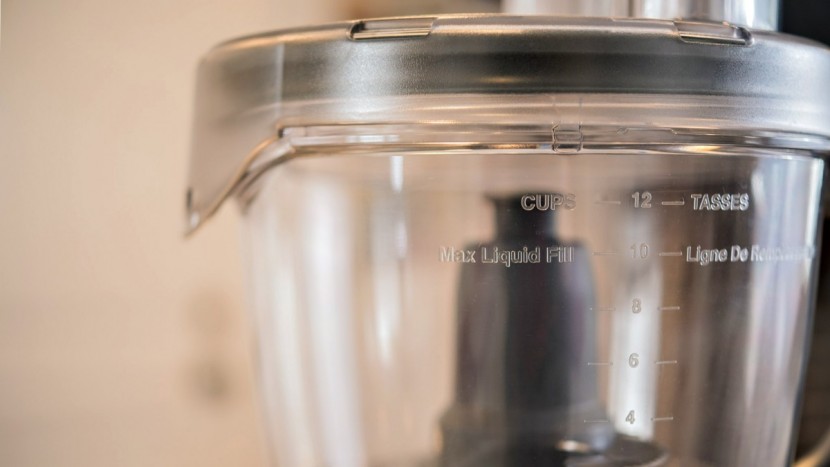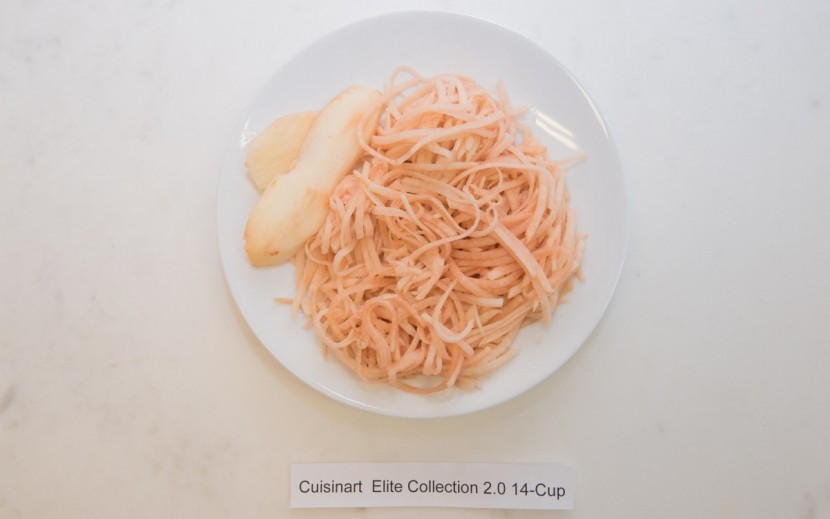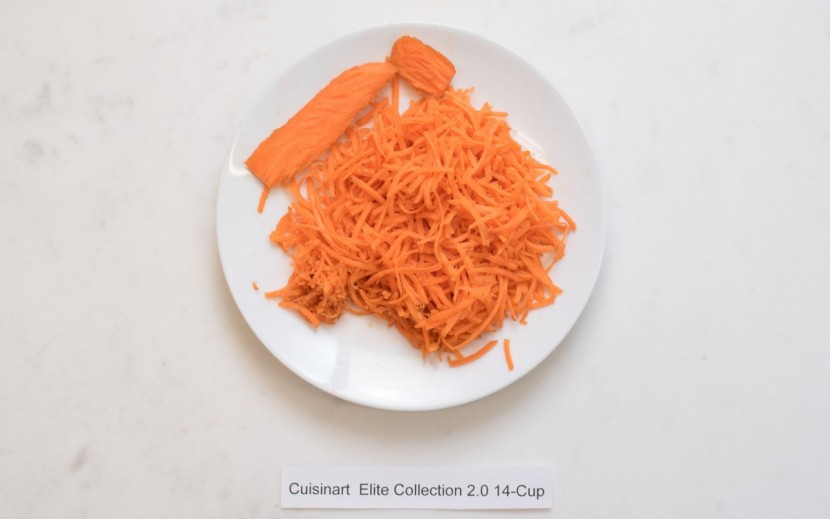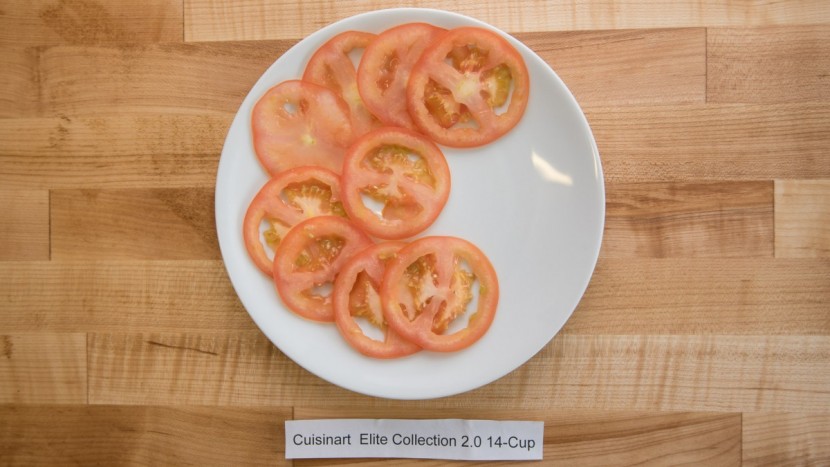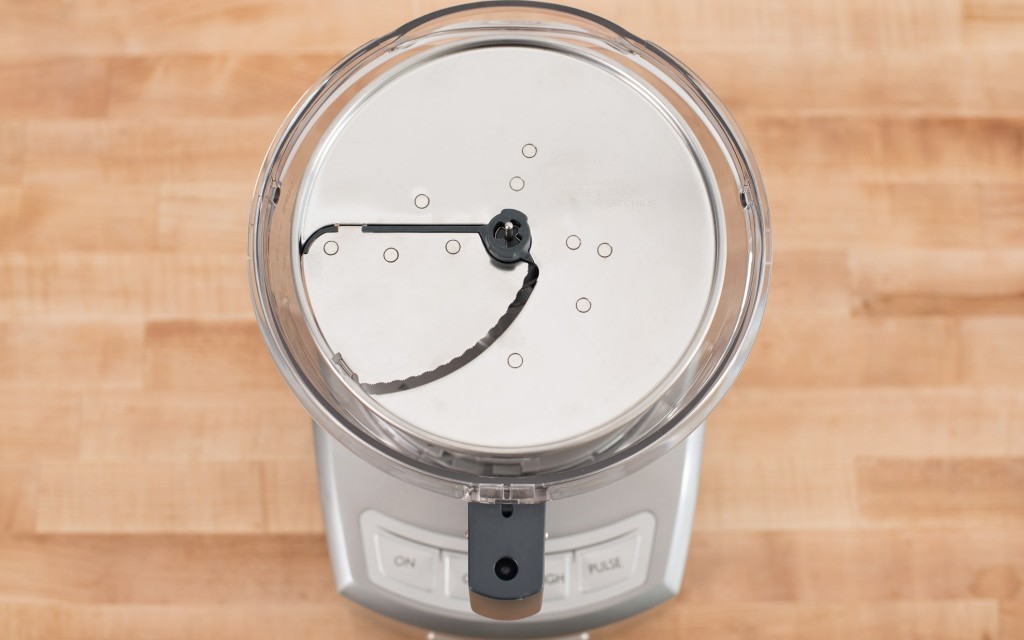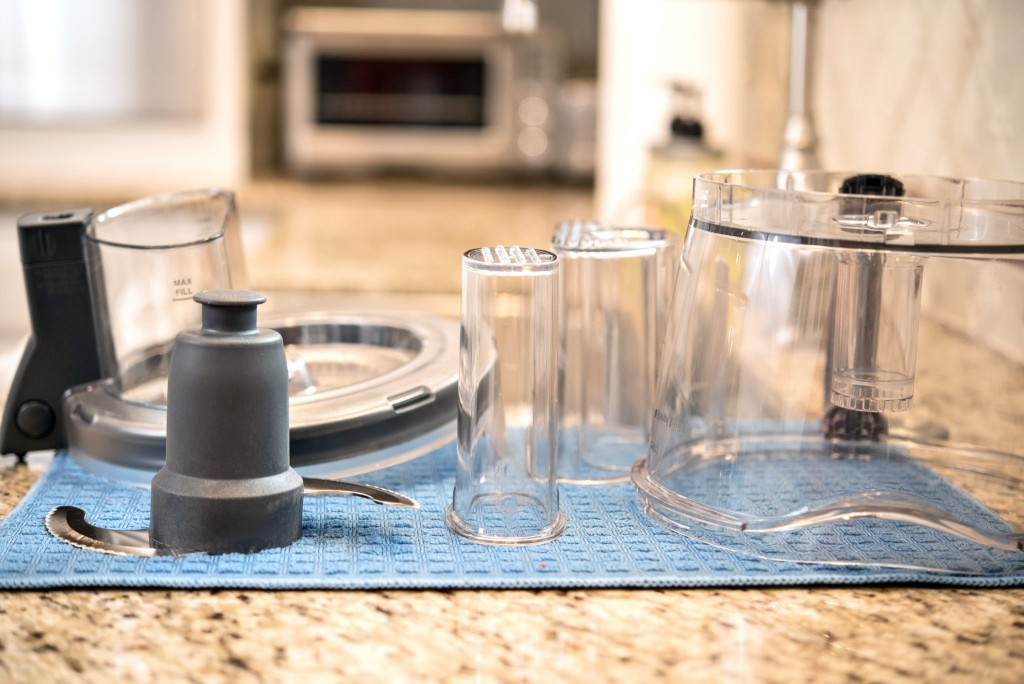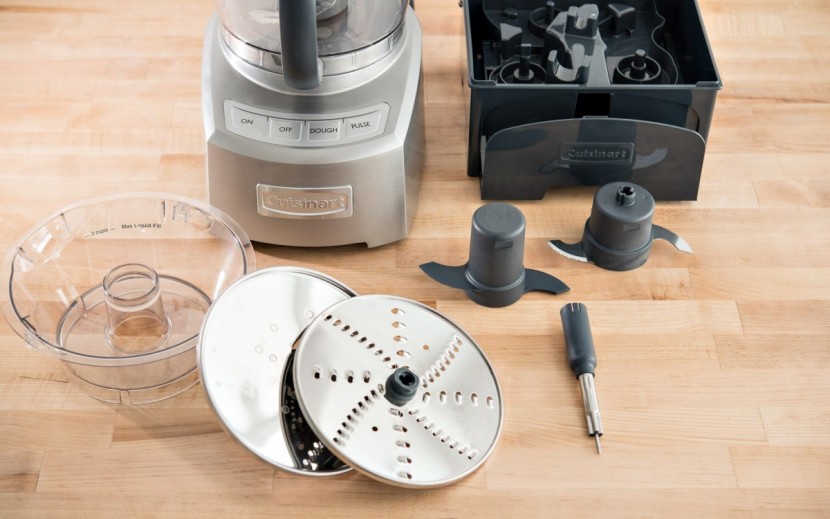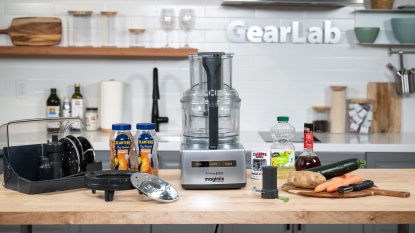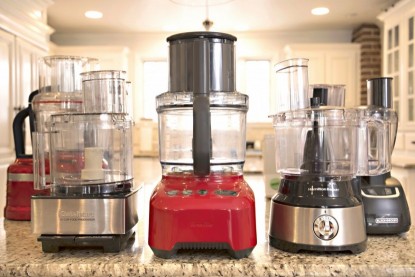
Our Verdict
Our Analysis and Test Results
Chopping
The Cuisinart Elite earned an average score for its performance at chopping onions, carrots, almonds, and for the level of control offered by the “Pulse” button. The majority of two quartered onions were finely chopped with six pulses, except for the three very large chunks that remained unchopped.
The Elite did worse at chopping carrots, actually tying for the lowest score of the group. It struggled to chop them all, leaving a bunch of large chunks and correctly chopped carrots or over-processing a large portion of the batch to eliminate the residual larger pieces. It did substantially better at chopping almonds, producing a third-tier quality product. The almonds were chopped, but it took a little longer than other models, and the Elite produced a lot more pulverized almond dust than we would have liked. However, this model offered some of the most precise control, with the blade stopping immediately upon the release of the “Pulse” button.
Mixing
The Elite did equivalently well at mixing. It did an acceptable job at mixing pizza dough, though it required some intervention with a spatula to knock the ball down to keep mixing. The ball of dough kept dragging on the lid and staying too wet rather than adequately mixing, requiring some intervention. It did a little better with pie crust dough, though there was some side sticking while mixing. The dough had some dry spots in it when rolled out, evidence of insufficient mixing. We could not successfully make mayonnaise in this model, but it would mix the lemon and egg in our one-cup recipe.
Pureeing
The Elite also scored average in the pureeing metric. The hummus made by this machine was very smooth and was rated high by our panel. It did average at grinding nut butter, though it initially took some babysitting, producing a satisfactory finished product in around 16 minutes.
The tomato sauce was above-average quality, while the applesauce produced a product that was chunky; a large chunk of apple was not pureed.
This model didn't do the best in our leak test, with water slowly dripping out around the seal. The maximum fill line was close to 10 cups of water in the bowl, which may have been a little ambitious.
Shredding
The Elite has both a fine and medium shredding option. It didn't do the best at shredding cheese, tying for the lowest score with a few other models.
This model was average at shredding potatoes, with around 80% of the shredded potato being high quality and the rest being small and stringy. The Elite even further improved when it came to shredding carrots, with the actual shreds being very nice, with only a small part being a mutilated mush. It also neglected to shred a handful of pieces, dropping its score slightly.
This model would fit a two pound block of cheese in the chute without trimming. However, a relatively large chunk of cheese managed to squeeze through the shredding disc without being shredded, and the shredded cheese produced had plenty of crumbles, reducing the quality.
Slicing
This is the single metric where the Elite truly shined. The Elite did a great job at shredding tomatoes, zucchini, and potatoes. We also really liked how the disc on this model was easily adjustable for slicing thickness, with millimeter increments marked out. The sliced potatoes were about as perfect as we could hope for, with only a minuscule bit of taper on some slices. The sliced tomatoes were also fantastic, and the chute was large enough to fit even the largest tomato we used, even though it was a bit tight.
The zucchini slices were also impeccable, though the large chute made skinnier objects prone to fall over. Regardless, the slices were very consistent and had almost zero taper.
Cleaning
The bowl, lid, blades, and discs are all dishwasher safe, though the manufacturer recommends using the top shelf only. The blade was of medium length and easy to wash manually. The lid and bowl both were simple to clean, with no annoying plastic details for food to become snared in.
Should You Buy the Cuisinart Elite Collection 2.0?
While this model excelled at slicing, it failed to impress in other tests in our best food processors review. While it might be a good option if you only want to slice things, the price tag seems quite high for a slicing-only machine. There are certainly other options that perform better and cost less.
What Other Food Processors Should You Consider?
For the performance, this model is rather pricy. The Custom 14 was our favorite Cuisinart model, and it scores higher and costs less. The Hamilton Beach 10-Cup is super affordable and scores very high in our rankings, making for an excellent value buy. The Breville Sous Chef 16 Pro takes the cake for overall performance, earning high marks across the board and the title of our favorite food processor. If you can afford it and want the best, the Breville is the model we'd recommend.






